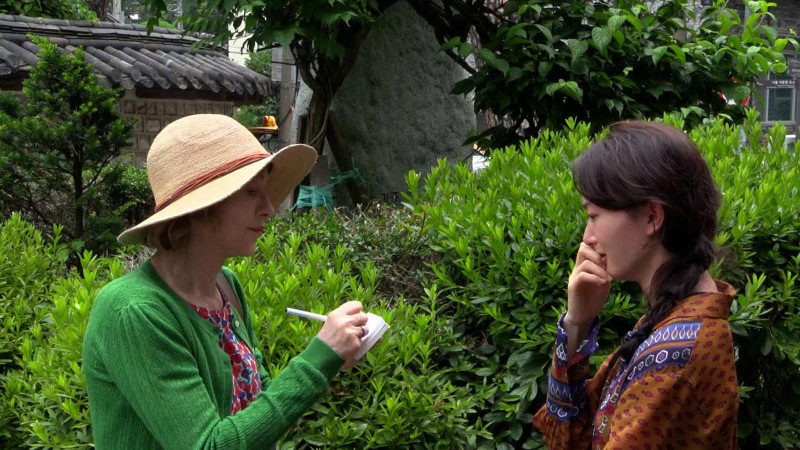New Cineaste, New Camera Obscura

Most festivals are still hybrid affairs, but the balance is shifting toward getting people back in theaters. Mona Fastvold’s The World to Come, with Katherine Waterston and Vanessa Kirby, will open the second phase of Rotterdam’s fiftieth edition on June 2, presented first online and then in theaters around the city. In all, 139 films, including revivals of Jane Campion’s Sweetie (1989) and Jim Jarmusch’s Night on Earth (1991), will screen through June 9.
- The new issue of Cineaste is out, accompanied by a handful of online exclusives. In print, Michael Sandlin reviews Glenn Frankel’s new book on the making of Midnight Cowboy (1969), and online, Michał Oleszczyk and Alex Ramon discuss John Schlesinger’s follow-up to that film, Sunday Bloody Sunday (1971). If the former—“essentially a gay-tinted buddy movie exploiting the gorgeous squalor of late-1960s Times Square,” as Oleszczyk puts it—hadn’t won three Oscars, the latter might never have been made. “Sunday Bloody Sunday was the film that not only helped shape my notion of what a gay life may have in store for me—more profoundly, it also formed my idea of adulthood itself, as a state of constant flux, imperfect decisions, and pursuit of elusive satisfaction,” says Oleszczyk. Also online: Robert Koehler on Adam Curtis and Michael Sicinski on Kevin Jerome Everson.
- This evening at Meanwood Valley Urban Farm, on the outer edge of the English city of Leeds, Pavilion will present outdoor screenings of two films by Nathanial Dorsky and another by his partner, Jerome Hiler, all three of them silent and shot on 16 mm. Will Rose talks with the filmmakers about the relationships between their work and poetry, music, memory, and the changing of the seasons. “Every screening is a law unto itself,” says Hiler. “No two are alike—even when there’s an immediate repeat screening. When I send my films out to be rented, they’re like children old enough to be on their own. I wish them luck. That’s about all I can do.”
- Another Screen is currently presenting two outstanding, freely accessible online programs, For a Free Palestine: Films by Palestinian Women and Marguerite Duras on Television. The first half of the Duras program is made up of six interviews the writer and filmmaker conducted in the mid-1960s for Dim Dam Dom, a television magazine broadcast in France once a month on Sundays. Agnès Varda and Claude Lanzmann were regular contributors, and presenters included Françoise Hardy, Geraldine Chaplin, and Romy Schneider. As an interviewer, Duras was a “master of raconteurial abstraction, sometimes even recalling a French John Wilson,” writes Mackenzie Lukenbill at Screen Slate. “While her questions are often cryptic and open-ended (‘What are your thoughts on monkeys?’), they are almost always imbued with the revolutionary zeal of her early journalistic writing in Le 14 juillet and the France Observateur.”
- French philosopher Gaston Bachelard “really blew my mind,” Agnès Varda once said in an interview not long after making her first film in California, Uncle Yanco, a portrait of the artist Jean “Yanco” Varda, who was in fact her second cousin. In the new issue of Camera Obscura devoted entirely to Varda, Homay King asks, “What kind of creative imagination has its source not in the divine, in the human mind, in abstract structures like language, in the unconscious, or, finally, as one might expect, in a phenomenological or vitalist account, but solely in the physical and vital properties of matter? I hope to begin to answer this question in a provisional way in this article, through analysis of Varda’s film, an account of Jean Varda’s life and artistic oeuvre, and commentary on Bachelard’s writings on the image.”
- Brandon Cronenberg, son of David, is setting up a limited series adaptation of J. G. Ballard’s 2000 novel Super-Cannes, and as it happens, Monday marked the twenty-fifth anniversary of the premiere of his father’s controversial Ballard adaptation, Crash—in Cannes, where it won hearty boos and a special prize from the jury. Writing for the Ringer, Adam Nayman finds it “worth asking exactly why Crash raised so many hackles to such a skyscraping degree in 1996 . . . In the neo-Puritan context of MonicaGate, the only thing scarier to cultural gatekeepers than a movie that was too sexy was a movie filled with sex that wasn’t conventionally or marketably sexy at all.” At one point, a character “trawls through a floodlit accident scene snapping photographs,” and the sequence becomes “allegory, autocritique, and accusation all rolled into one: Like all genuinely provocative artists, Cronenberg knows how to turn his audience into rubberneckers.”



